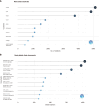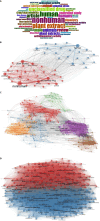Plant extracts with antioxidant and hepatoprotective benefits for liver health: A bibliometric analysis of drug delivery systems
- PMID: 40496363
- PMCID: PMC12146923
- DOI: 10.3748/wjg.v31.i18.105836
Plant extracts with antioxidant and hepatoprotective benefits for liver health: A bibliometric analysis of drug delivery systems
Abstract
Background: The rising global burden of liver diseases, such as non-alcoholic fatty liver disease and liver fibrosis, has necessitated innovative therapeutic approaches. Plant-based therapies, recognized for their anti-inflammatory and antioxidant properties, have shown promising effects. However, poor bioavailability limits their clinical application.
Aim: To map global research trends, key contributors, and emerging themes in plant-based therapies combined with advanced drug delivery systems for liver health.
Methods: Using the Scopus database, 645 documents were retrieved and analyzed using bibliometric tools Biblioshiny and VOSviewer. Analysis focused on publication trends, geographical contributions, and advancements in drug delivery technologies, including nanoparticles, liposomes, and polymeric micelles. Metrics such as publication growth rate, authorship collaboration, and thematic clustering were assessed.
Results: The dataset spans 43 years (1981-2024), with an annual growth rate of 11.09% in the number of publications. Research output is dominated by China (33%), followed by the United States (24%) and India (18%). Collaborative studies accounted for 24.34% of publications, with an average of 5.81 co-authors per document. Key innovations include nanoparticle encapsulation of curcumin and silymarin, improving bioavailability by up to 85%. Highly cited studies demonstrated the antioxidant, anti-inflammatory, and anti-fibrotic properties of these compounds. For instance, curcumin nanoparticles showed a 70% improvement in solubility, and silymarin liposomal formulations enhanced therapeutic efficiency by 62%. Thematic analysis revealed a transition from basic clinical observations to molecular and pharmacokinetic research, with a focus on oxidative stress mitigation and hepatoprotection.
Conclusion: This study highlights the growing synergy between plant-based therapies and advanced drug delivery systems, with significant contributions from Asian and Western countries. Future efforts should prioritize clinical trials, standardization of plant extract formulations, and interdisciplinary approaches to maximize therapeutic outcomes. The findings provide a foundation for integrating plant-derived compounds into evidence-based hepatological therapies, addressing critical challenges in bioavailability and safety.
Keywords: Bibliometric analysis; Bioavailability; Drug delivery; Hepatoprotection; Liver health; Pharmacokinetics; Plant extracts.
©The Author(s) 2025. Published by Baishideng Publishing Group Inc. All rights reserved.
Conflict of interest statement
Conflict-of-interest statement: The authors declare that the research was conducted in the absence of any commercial or financial relationships that could be construed as a potential conflict of interest.
Figures








References
-
- Devarbhavi H, Asrani SK, Arab JP, Nartey YA, Pose E, Kamath PS. Global burden of liver disease: 2023 update. J Hepatol. 2023;79:516–537. - PubMed
-
- Nonalcoholic Fatty Liver Disease (NAFLD). Fatty Liver Disease. 2022. Available from: https://liverfoundation.org/about-your-liver/facts-about-liver-disease/f...
MeSH terms
Substances
LinkOut - more resources
Full Text Sources
Medical

